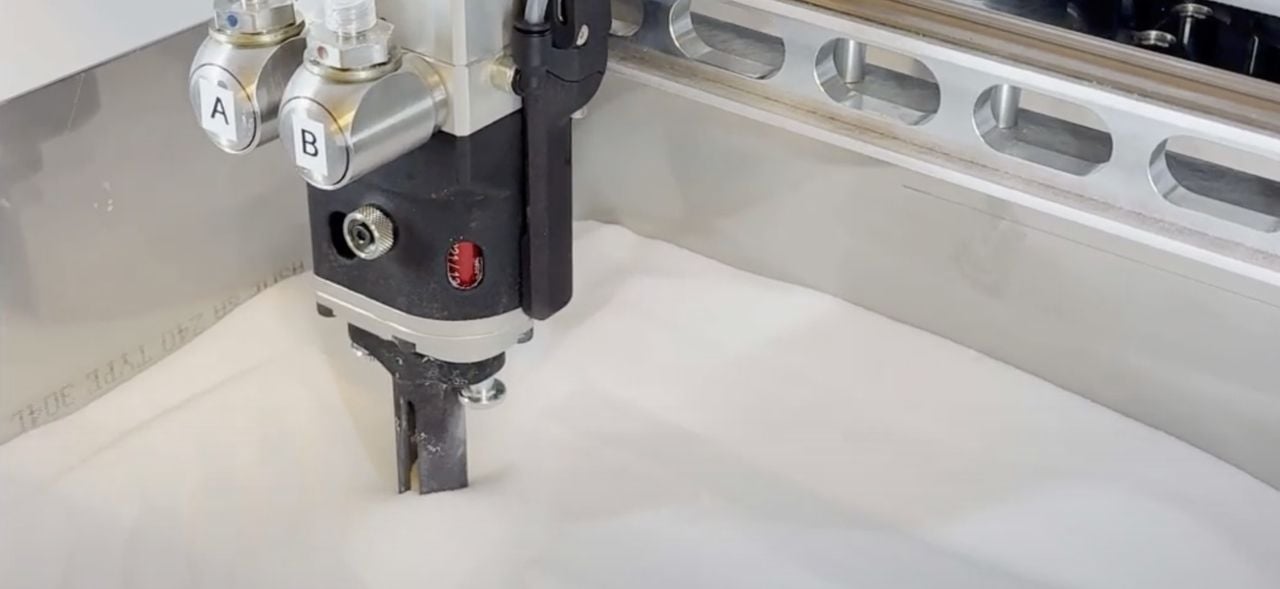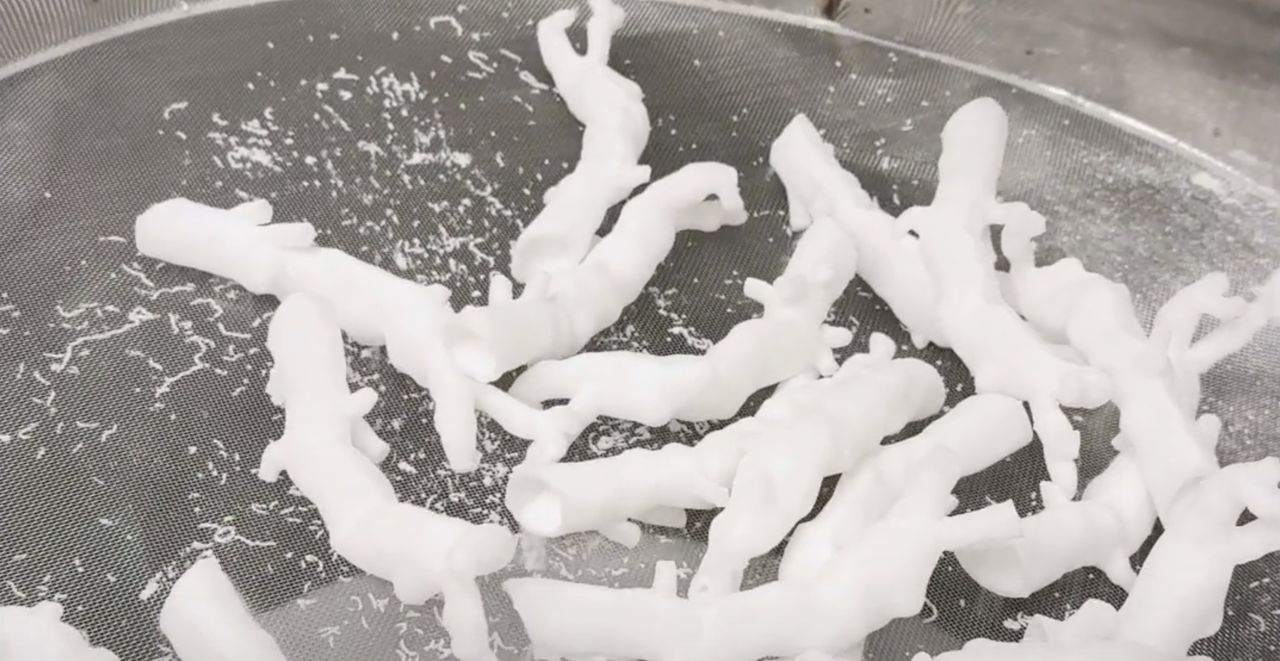
Lynxter announced a very unusual new approach to silicone 3D printing: Dynamic Molding.
Silicone 3D printing is relatively rare in the 3D print world, as few companies offer this capability. One of them is France-based Lynxter.
Lynxter and 3Deus Dynamics, creators of the new Dynamic Molding process, announced a strategic partnership. This collaboration targets healthcare, aeronautics, and defense using the new Dynamic Molding process.
Dynamic Molding

What is “dynamic molding”? It’s a patented variation of the material extrusion process. This approach involves depositing material into a granular medium, allowing gravity-defying prints without traditional support structures. This means highly complex parts such as anatomical models and soft tissue replicas, with high precision and biomimetic qualities, can be easily 3D printed.
In this video, you can see how the print nozzle moves around in 3D space while being surrounded by the granular medium. As the toolhead moves, the granules move back into place to fill gaps.
Dynamic molding offers significant environmental and functional advantages:
- Waste-Free Printing: The granular medium can be reused, minimizing material waste, and no support structures are required.
- Composite Creation: Functional powders can be incorporated for properties like fire resistance, conductivity, and electromagnetic shielding.
- Sustainability: The process avoids toxic solvents, ensuring a safer, greener production method with a low carbon footprint
What applications could take advantage of dynamic molding? Here are some ideas:
- Healthcare: From surgical planning to medical device testing, dynamic molding enables patient-specific models with exceptional haptics and accuracy, reducing reliance on cadaver or animal trials. Fields like oncology, orthopedics, and gynecology are already using the technology.
- Aeronautics and Defense: High-performance parts such as fire-resistant seals, conductive components, and personal protective equipment are now achievable with dynamic molding, meeting industry standards such as ISO 2685.
The Lynxter S300X, already able to perform silicone 3D printing, now supports dynamic molding with optional features including:
- Tray adapter kits
- Silicone material bundles with compatible powders
- Downloadable print profiles
- Design guides and expert support
Lynxter and 3Deus Dynamics’ partnership could trigger big changes in silicone 3D printing. Dynamic molding’s waste-free, support-less approach directly opens the possibility of unprecedented complexity in part design. The ability to produce high-precision medical models and durable industrial components could be of great importance to some industries.
Other 3D printing methods like SLA or DLP face increasing scrutiny over safety issues, toxicity, and part longevity; dynamic molding could offer a cleaner, more durable alternative approach.
For professionals seeking to innovate in healthcare, aerospace, or defense, the Lynxter S300X with dynamic molding capabilities may offer a compelling solution.
Via Lynxter
